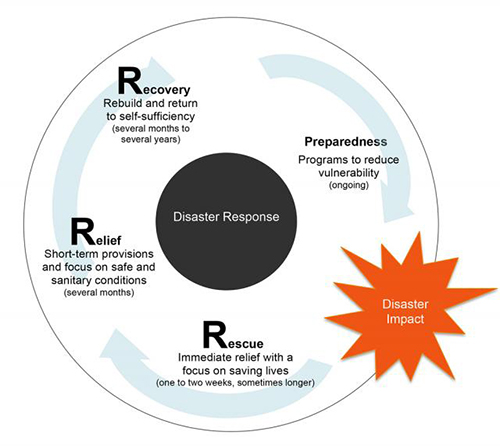Taking the Long View on Disaster Recovery
When Typhoon Haiyan struck, a colleague and I were packing our bags for a visit with our partners in the Philippines. Initially, it wasn’t clear if the typhoon would set things back since the Philippines experience around 20 typhoons a year, and as a result have built a capacity for responding resiliently in their wake. So, we were cautiously on stand-by until it became clear yesterday that our visit might be more hindrance than help. By the time the typhoon hit, I had already posted to Facebook that I was departing for the Philippines, so friends and colleagues naturally reached out to find out how Episcopal Relief & Development would respond. I explained that Episcopal Relief & Development takes the long view on disasters response and recovery. This makes sense if you know what we mean by three Rs of Disasters: Rescue, Relief and Recovery.

Currently, for Typhoon Haiyan, we are in the “Rescue” phase. All hands are on deck to help save lives and property. This phase involves finding and treating the immediate medical needs of survivors and stabilizing ongoing hazards, such as shifting buildings. This type of work is best left to the pros – government and military search-and-rescue teams. These groups also have equipment that can clear roads and debris, as well as large specialized operations with mass distribution systems and strategically positioned warehouses. The “Rescue” phase can take one to two weeks, sometimes longer.
The next phase is the “Relief” phase, when the focus turns to creating short-term safe and sanitary conditions. The church is often one of the first places people go to seek assistance and shelter. Right now, our partners are coordinating with the National Council of Churches in the Philippines to assess and prepare a response to these types of needs. The “Relief” phase typically lasts a few months.
Eventually, we get to the third and final phase: “Recovery.” During recovery the emphasis shifts to restoring services, repairing houses and buildings, returning individuals to self-sufficiency and rebuilding communities. The challenge of the “Recovery” phase is that most of the television cameras have moved on, but in many cases, the human suffering has grown. It is a chronic state, not a crisis. This however is the phase that Episcopal Relief & Development and its worldwide partners excel at. Whether we are in Haiti, Colorado or the Philippines, we work closely with the churches that are part of the fabric of these communities. As such, we get to know the needs intimately alongside those who understand how best to meet them.
In times of disaster, our staff immediately begins coordinating with our partners to prepare for the “Relief” phase and secure resources for the “Recovery” phase. We can’t predict exactly what will be needed in any given disaster, but we are committed to responding appropriately while taking the long view towards sustainable disaster recovery.
I ask your prayers for our sisters and brothers in the Philippines.
For more information on Typhoon Haiyan and on Episcopal Relief & Development’s response, please visit: https://www.episcopalrelief.org/press-and-resources/press-releases/2013/super-typhoon-haiyan
————–
Sean McConnell recently joined Episcopal Relief & Development as the Director of Engagement.


